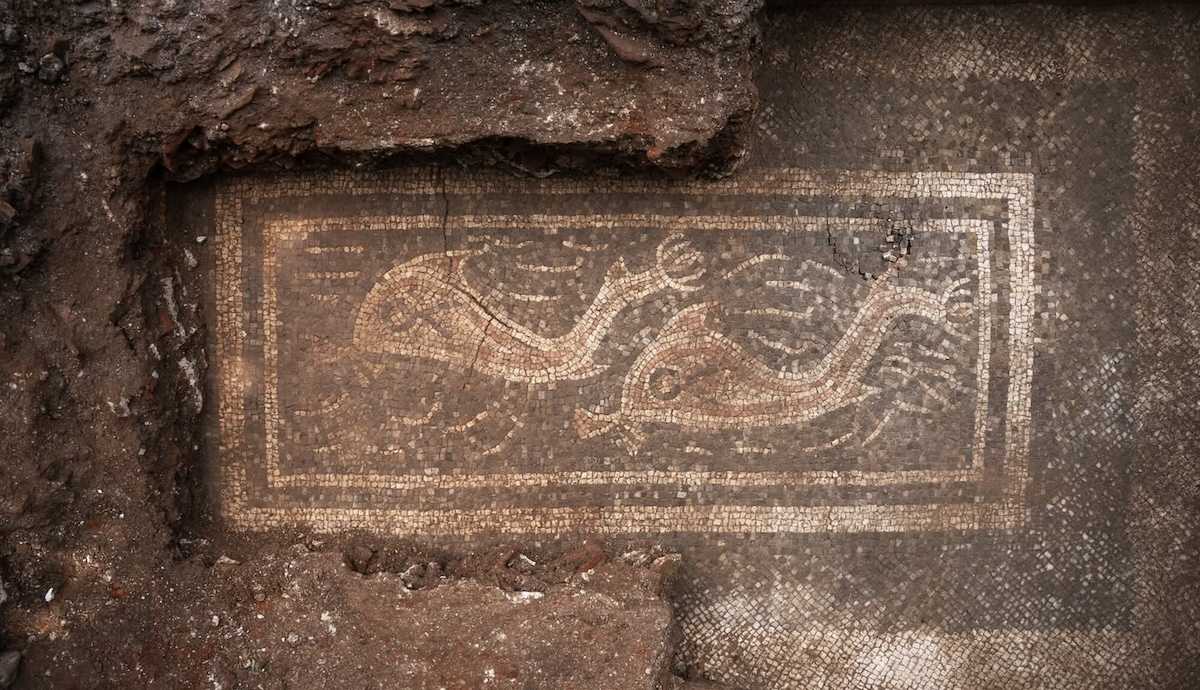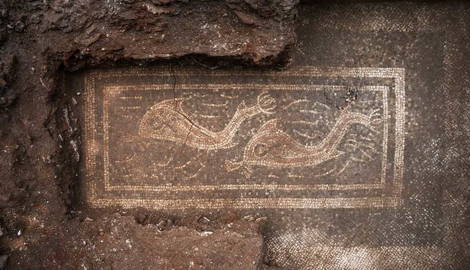
Excavations near the ancient Roman city of Ovilava in Austria have revealed a highly decorated villa complex. Among these decorations are three Roman mosaic floors—one of which bears an uncommon aquatic motif.
The discovery, announced by a joint team from OÖ Landes-Kultur GmbH and the University of Salzburg, is being presented as one of Upper Austria’s most significant archaeological finds in recent years.
Austrian Archaeologists Unearth Ancient Roman Villa Complex

So far, Austrian archaeologists have unearthed over 3,000 square feet of what appears to be an urban villa that once housed a wealthy Roman family of the imperial period. Their discovery of Roman mosaic floors, which feature a rare dolphin design, confirms that the effects of Romanization extended as far north as the Alpine region by the 2nd century CE. The mosaics also reveal the opulent lifestyle and refined artistic tastes of the ancient residents of the imperial period villa.
The Roman mosaic excavation site overlooks the ancient city of Olivava—now known as Wels, Austria. Olivava once served as the capital of the Roman province of Noricum Ripensis and boasted the prestigious title of Colonia Aurelia Antoniana Ovilabis.
Unusual Dolphin Motif Reveals Cultural Connections Across Roman Empire

The Roman mosaics offer valuable insights into the aesthetic preferences of the upper class in Alpine Rome. The centerpiece of the villa complex floor features a design of two dolphins surrounded by stylized ocean waves. According to experts, this motif is rarely seen so far from the Mediterranean region. Its discovery raises questions about the cultural connections between the northern reaches of the Roman Empire and the artistic production centers of the south.
Excavations at the villa complex, which first began in 2023, revealed two additional mosaic floors. One depicts an intricately detailed krater, a large vessel used for mixing wine. The other, which is still only partially uncovered, comprises symmetrical geometric patterns.
The Austrian archaeological team will continue excavation work at the site through June 6. Afterwards, they plan to incorporate the Roman mosaics into the archaeology exhibit at the Schlossmuseum Linz.







